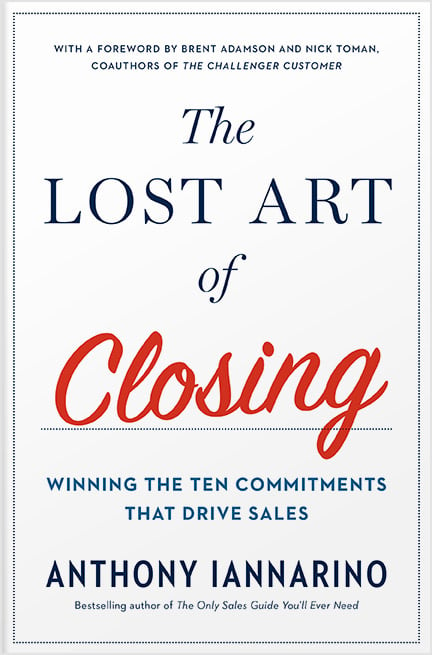The Gist:
- The legacy approaches to prospecting that try to trick your prospect actually prevent you from getting meetings.
- Decision-makers who are time-starved don’t take meetings without being promised a value proposition that is worth their time.
- Your approach should trade enough value that the decision-maker can agree to the meeting.
The salesperson who called me told me his name was Jack, but he didn’t tell me his last name or which company he worked for. “Hello Jack,” I replied. Then he asked me, “Is now a good time to speak?”
Because his approach was so awful, I recognized that Jack was poorly trained, makes very little money, has a manager unwilling or unable to help him improve, gets evaluated based solely on his outbound call attempts, and is probably doing the best he can under the circumstances. Even though he may not be long for his sales role, Jack is our brother, a member of our tribe, and he deserves professional courtesy. So after asking him what he wanted to speak about, I gently told him that my business model doesn’t require what he sells, then I thanked him for his call to check on me.
Dropping Your Crutches
There is a certain logic to some of the terrible things that salespeople have been taught to do when making a cold call. Asking “is now a good time to speak?” without identifying who they are, what company they are with, and the nature of their call, assumes that their contact will politely provide them with permission to speak. Of course, the fact that the contact answered the phone in the first place gives the salesperson all the “permission” they need, but the salesperson’s lack of confidence causes them to do something besides make the necessary pitch for a meeting. Along similar lines, asking “is now a bad time to speak?” is easy to shoot down with “yes,” or if your contact is feeling merciful, “I’m just walking into a meeting.”
Both lines assume that you can trick someone into giving you their time. Like everything untrained salespeople might try, that trick works occasionally. Unfortunately, that convinces some people that it is a viable approach, even when the conversations end without a scheduled meeting—mostly because a poorly equipped salesperson tries to create interest on a call, a conversation the prospect has not committed to having at that moment.

How Not to Fear the Phone
Call up some girls
But I’m afraid of the phone
I’m always talkin’ to myself
I guess I’m never alone. — John Cougar Mellencamp
Salespeople like Jack rely on tricks to get attention because they don’t believe that they belong in the room—or on the phone—with decision-makers. Even beyond any natural shyness or aversion to conflict, the reason they struggle is because they don’t have anything of value to offer the client outside of their product or solution. Consultative salespeople know, however, that the single factor that lets them acquire a meeting is their ability to confidently trade enough potential value for the client’s time.
Sadly, it is going to get even more difficult to get a meeting in the future. When people are time-starved and busy, they become more protective of their time. When a salesperson doesn’t project with confidence their ability to provide something of value with the time they request, the prospective client makes the easy, well, call to reject their request. If you don’t believe you belong in the room when your client is making key business decisions, you’ll never prospect effectively.
Do You Belong in the Room?
When you call a prospective client as a consultative salesperson, you begin by telling them your name and your company’s name. You do so because it is polite, and so your contact knows who you are. Then you directly state that you are calling them to ask them for a meeting. You do this because, well, you are calling them to ask them for a meeting, and there is no reason to hide this fact or pretend otherwise. Think of a cold call like an appearance on Shark Tank: none of the hopeful entrepreneurs are there to make conversation.
With your identity and agenda established, you have seconds to provide a compelling value proposition for the meeting, offering the contact something that is worth the small amount of time you are requesting. When you are speaking to decision-makers and decision-shapers, you need to provide them with insight and ideas that allow them to improve their view of their business, so they can make the better decisions that produce better results. In The Lost Art of Closing this is called “The Trading Value Rule,” and it is a rule worth observing.
No more pushy sales tactics. The Lost Art of Closing shows you how to proactively lead your customer and close your sales.
Instead of offering to share information about yourself, your company, and the clients you serve, you offer to brief your prospective client on the trends, factors, and events that will bring significant positive or negative outcomes for the contact and their business. Call it an executive briefing. Call it a risk assessment. Call it a summary of best practices in the industry. Whatever you label it, promise to share something that will improve your prospective client’s position—even if they never buy anything from you, the true test of your value as an advisor.
Do Good Work:
- Identify the crutches you use when prospecting, then eliminate them.
- Do the work to become an expert in your industry, gaining the confidence to believe that you belong in the room when your prospects make decisions about their business.
- Develop a value trade that compels executives to accept your request for a meeting because the promised value is worth more than the small amount of time you need to brief them.

Get the Free eBook!
Want to master cold calling? Download my free eBook!
Many would have you believe that cold calling is dead, but the successful have no fear of the phone; they use it to outproduce their competitors.
Download Now
Essential Reading!
Get my 2nd book: The Lost Art of Closing
"In The Lost Art of Closing, Anthony proves that the final commitment can actually be one of the easiest parts of the sales process—if you’ve set it up properly with other commitments that have to happen long before the close. The key is to lead customers through a series of necessary steps designed to prevent a purchase stall."
Buy Now










